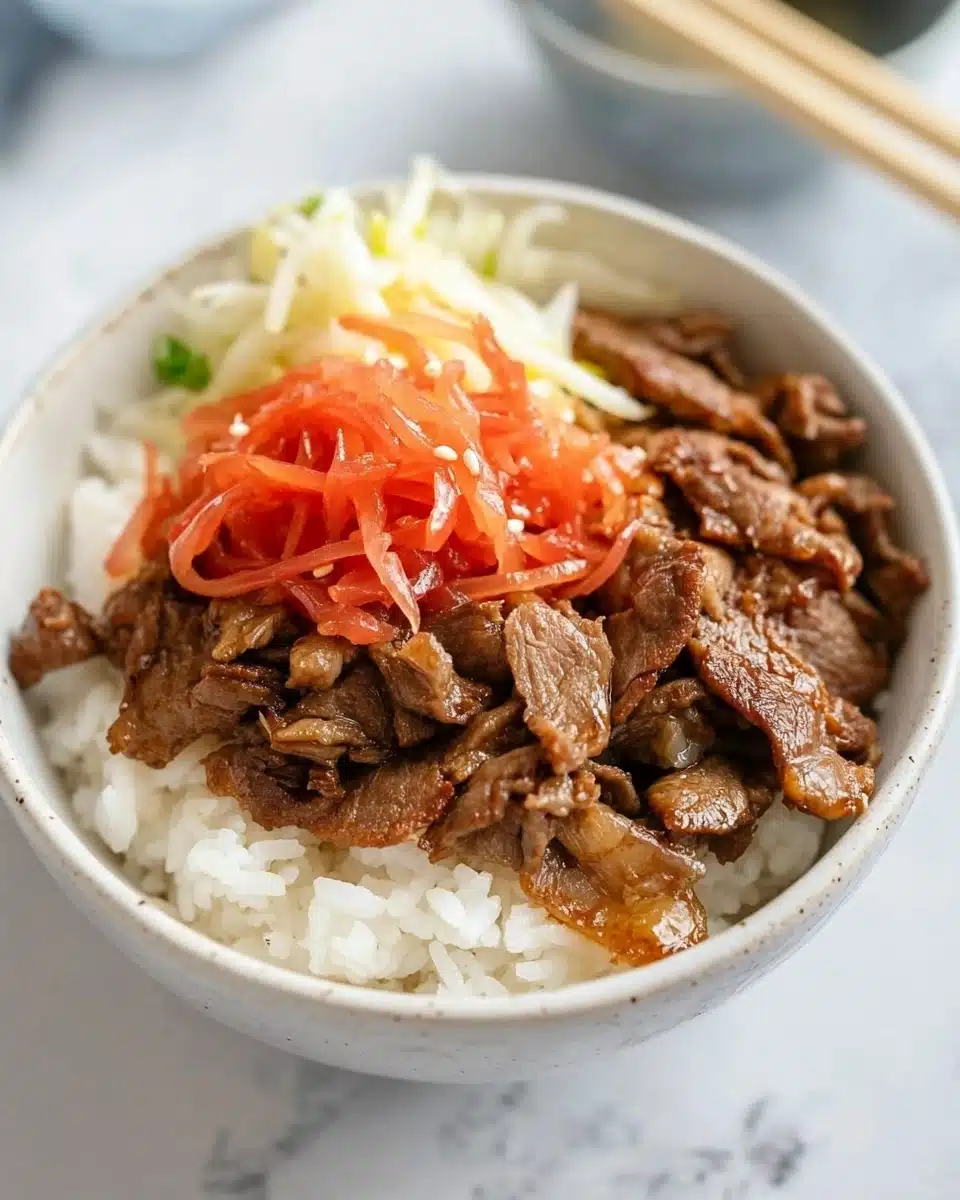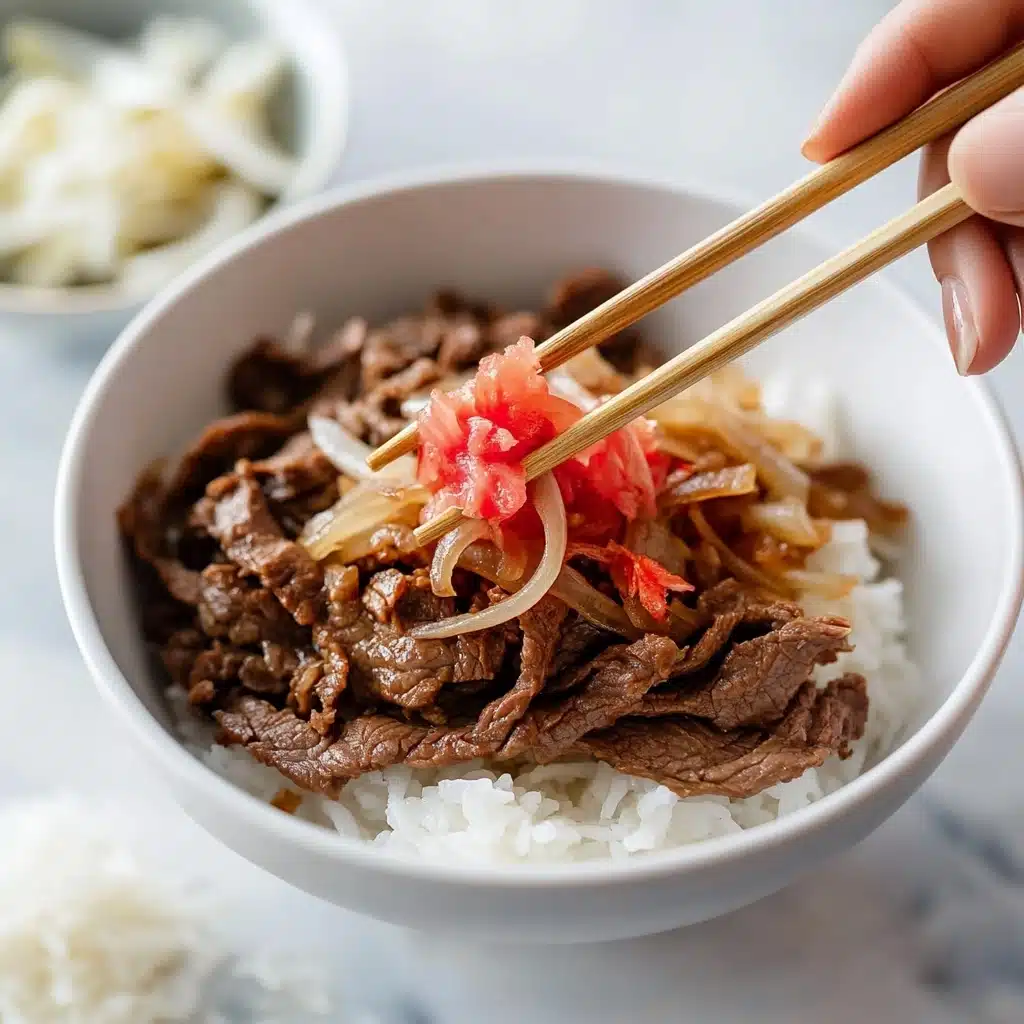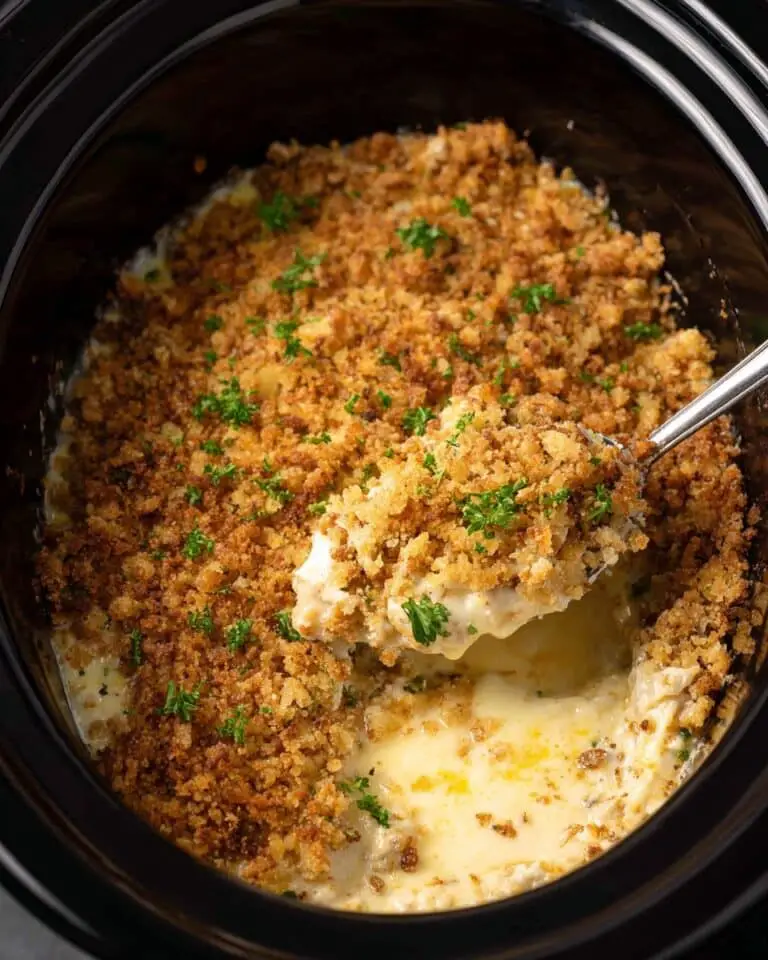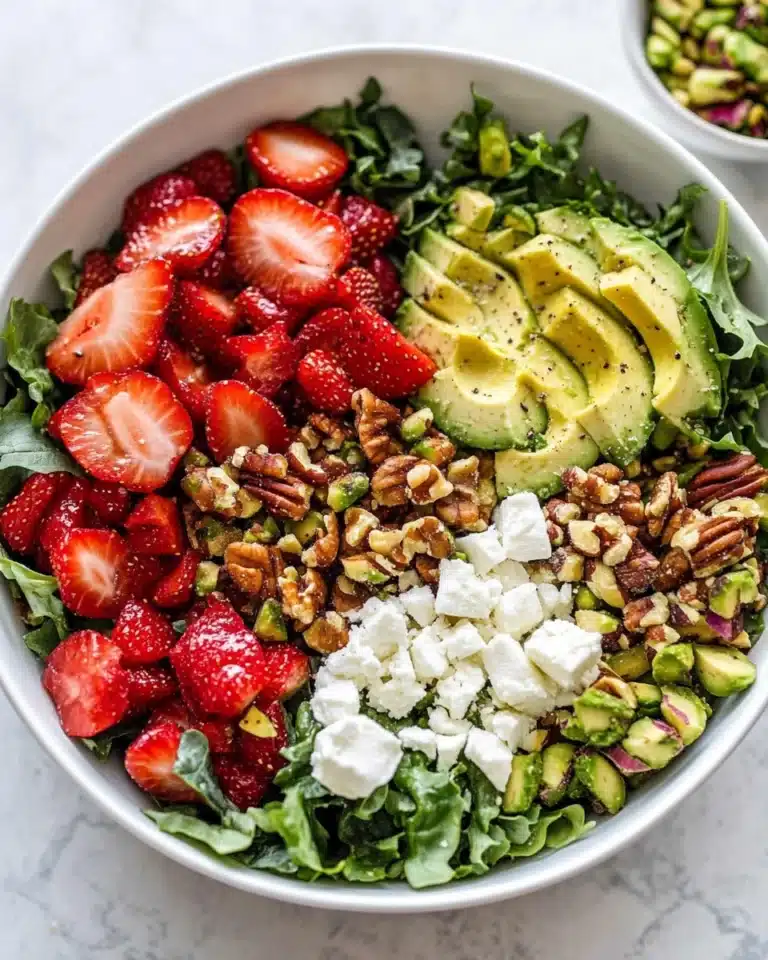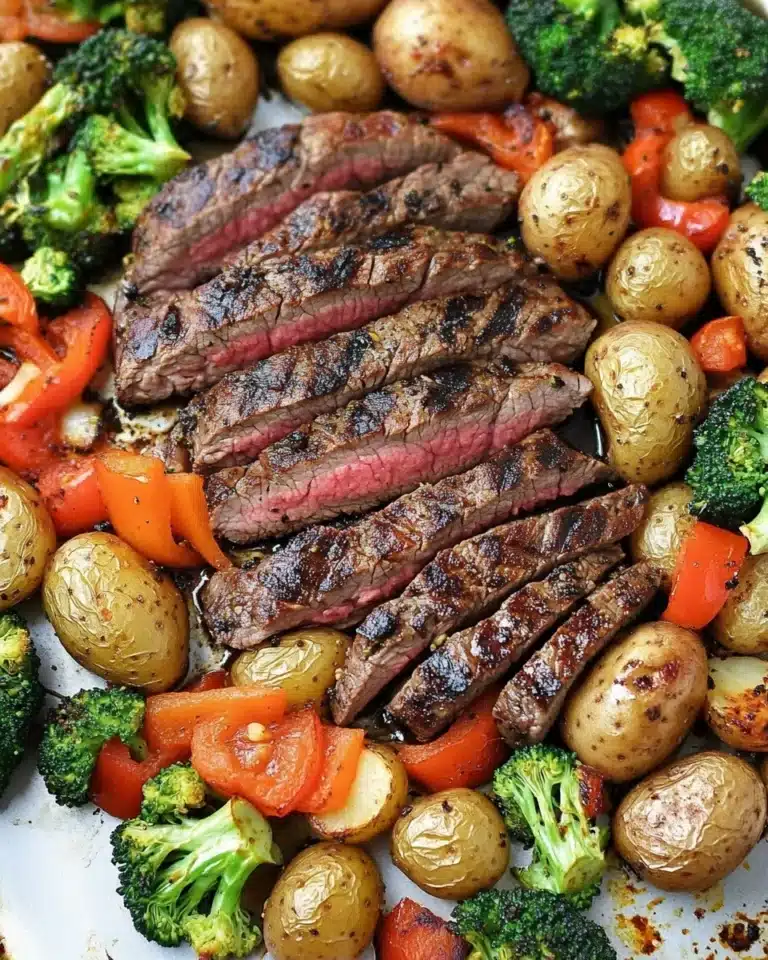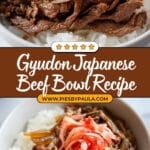If you’ve ever craved that comforting, savory bowl of Japanese beef and rice, you’re going to absolutely love this Gyudon Japanese Beef Bowls Recipe. I first tried making it when I wanted something hearty yet quick for dinner, and it instantly became a family favorite. It’s a perfect weeknight meal because it comes together in under 20 minutes and uses simple ingredients that pack so much flavor.
What makes this Gyudon Japanese Beef Bowls Recipe so special is the balance of sweet, salty, and umami notes all simmered right into thinly sliced beef and onions, served over steaming hot rice. Whether you’re cooking for yourself or feeding a crowd, this dish hits the spot every time — trust me, you’ll want to keep this recipe handy for busy days or cozy nights.
Why You’ll Love This Recipe
- Quick and Easy: Ready in just 15 minutes, perfect for busy weeknights.
- Authentic Flavors: Uses traditional Japanese ingredients like mirin and dashi powder for genuine taste.
- Minimal Ingredients: Just a few pantry staples come together for a delicious meal.
- Family Favorite: I’ve served this repeatedly and everyone always asks for seconds!
Ingredients You’ll Need
This Gyudon Japanese Beef Bowls Recipe calls for simple ingredients that complement each other beautifully. When shopping, look for thinly sliced beef which is key to getting that tender texture.
- Thinly sliced beef: Look for ribeye or chuck for good flavor and tenderness.
- Onion: Sweet onions work best to add depth without overpowering.
- Red pickled ginger: This adds a refreshing tangy (and pretty) pop to finish.
- Scallion: Thinly sliced diagonally for a fresh, mild bite on top.
- Cooked Japanese rice: Short-grain rice holds moisture and complements the beef perfectly.
- Olive oil: I use this for cooking, but neutral oil works fine too.
- Sauce ingredients: Water, dashi powder, sugar, sake, mirin, ginger juice, soy sauce – these combine to form the rich, savory-sweet sauce typical of Gyudon.
Variations
I love how flexible this Gyudon Japanese Beef Bowls Recipe is—you can tweak it to suit your tastes or diet without losing the essence of what makes this dish great. Here are a few ways I’ve tried it:
- Vegetarian option: I swapped the beef with thinly sliced king oyster mushrooms one time, and the texture was surprisingly satisfying.
- Spicy twist: Adding a dash of shichimi togarashi (Japanese seven spice) before serving gives a nice warming kick.
- Heartier with veggies: I once added thin carrot strips and shiitake mushrooms to the sauce for extra flavor and nutrition.
- Gluten-free: Use tamari instead of soy sauce for a gluten-free version that still tastes incredible.
How to Make Gyudon Japanese Beef Bowls Recipe
Step 1: Prep and Cook the Onion
Start by slicing your onion into wedges—that way they cook evenly and soften nicely. Heat the olive oil in a saucepan over medium heat, then add the onions. Cook until they turn translucent, which usually takes about 3 to 5 minutes. This step releases the onion’s natural sweetness that’s essential for the dish’s flavor base.
Step 2: Build and Simmer the Sauce
Next, pour in the sauce ingredients—water, dashi powder, sugar, sake, mirin, ginger juice, and soy sauce—all at once. Stir to combine and bring it to a gentle simmer. The magic here is how these ingredients meld to create that signature Gyudon sauce: sweet, savory, with a hint of tang from the ginger. Let it simmer for a minute or two to marry the flavors.
Step 3: Add and Cook the Beef
Add the thinly sliced beef directly into the sauce. You want to keep the heat medium so the beef cooks quickly and remains tender—not tough! Stir occasionally and cook for about 5 minutes until the beef is just done and the sauce has slightly thickened. This is the point where your kitchen will start smelling amazing.
Step 4: Assemble Your Gyudon Bowls
Serve the beef and onion mixture hot over bowls of freshly cooked Japanese rice. Top each bowl with red pickled ginger and scallions—you’ll find these garnishes add a refreshing contrast that cuts through the richness beautifully. Grab chopsticks or a spoon, and dig in!
Pro Tips for Making Gyudon Japanese Beef Bowls Recipe
- Use Thinly Sliced Beef: I learned the hard way that thick beef slices don’t absorb the sauce well and take longer to cook—thin slices are key for that melt-in-your-mouth texture.
- Don’t Overcook the Onions: They should just turn translucent to maintain a little bite and sweetness instead of becoming mushy.
- Let the Sauce Reduce Slightly: This concentrates the flavors and helps coat the beef perfectly without needing extra thickening agents.
- Prep Your Rice Ahead: Having freshly cooked, warm rice ready makes serving faster and keeps the dish deliciously hot.
How to Serve Gyudon Japanese Beef Bowls Recipe
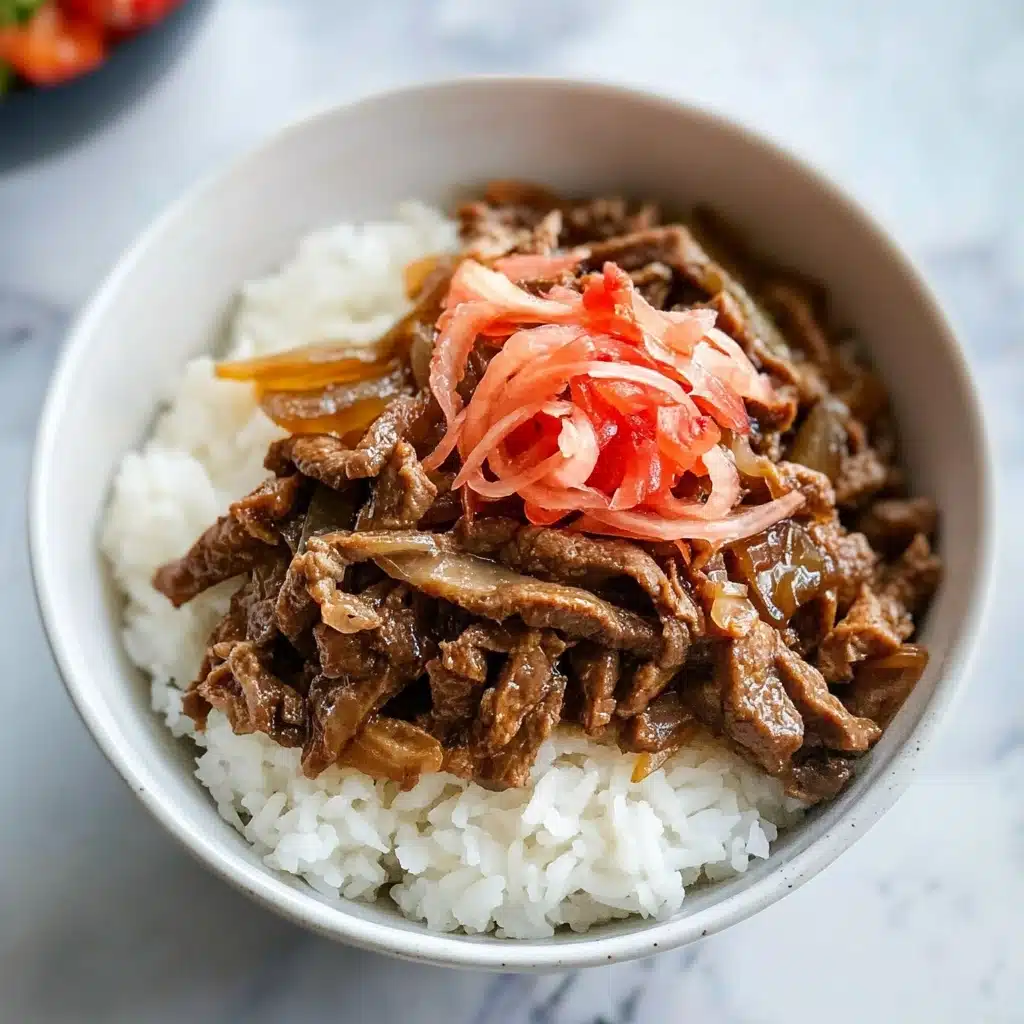
Garnishes
I always top my Gyudon bowls with bright red pickled ginger and scallions because the sharpness complements the savory beef perfectly. Sometimes I’ll add a soft poached egg on top for a silky, rich finish that my family goes crazy for.
Side Dishes
To round out the meal, I serve miso soup and a simple cucumber salad. The lightness of these sides balances the richness of the beef bowl, giving you a well-rounded Japanese comfort meal.
Creative Ways to Present
For special occasions, I like to serve Gyudon in deep ceramic bowls alongside little dishes of assorted pickles and a small bowl of edamame. It makes the experience feel more festive and authentic, perfect for sharing with guests.
Make Ahead and Storage
Storing Leftovers
I keep leftover beef and onions stored separately in an airtight container in the fridge for up to 3 days. This helps prevent the beef from becoming too soggy when reheated. The rice I store in another container to maintain its texture as well.
Freezing
I typically don’t freeze Gyudon because the texture of the beef and onions changes after thawing, but if you do, freeze only the cooked beef mixture (not the rice) in a freezer-safe container. Thaw overnight in the fridge before reheating gently.
Reheating
When reheating leftovers, I use a gentle stovetop method or microwave in short bursts, stirring occasionally. Adding a splash of water or broth helps loosen the sauce and keeps the beef tender without drying out.
FAQs
-
Can I use regular beef instead of thinly sliced beef for this Gyudon Japanese Beef Bowls Recipe?
Technically yes, but I don’t recommend it. Thinly sliced beef cooks quickly and absorbs the sauce better. Using thicker cuts means longer cooking times and a different texture that won’t give you that classic Gyudon experience. If you buy whole cuts, consider thinly slicing them yourself or ask your butcher for assistance.
-
What can I substitute if I don’t have dashi powder?
If you don’t have dashi powder, a mild fish or vegetable broth can work as a substitute. The dashi gives umami depth to the sauce, but the broth will still add some flavor. Just keep the saltiness in check so you don’t overpower the balance.
-
Is this Gyudon Japanese Beef Bowls Recipe suitable for meal prep?
Absolutely! Because it stores well for a few days in the fridge, it’s great for packing lunches or quick dinners. Just store rice separately from the beef to keep the texture fresh. Reheat with a splash of water and enjoy.
-
Can I make this recipe gluten-free?
Yes, simply swap soy sauce for tamari or a gluten-free soy sauce alternative. All the other ingredients should be naturally gluten-free unless you pick flavored or mixed brands, so double-check labels just to be safe.
Final Thoughts
This Gyudon Japanese Beef Bowls Recipe holds a special place in my kitchen because it’s one of those meals that’s fast, familiar, and full of flavor all at once. Whenever I make it, it feels like I’m sharing a little taste of Japan with my loved ones, yet without the fuss. I hope you’ll give it a try—you might find it becomes a go-to when you want a satisfying dish that feels cozy and comforting without spending hours cooking.
Print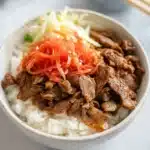
Gyudon Japanese Beef Bowls Recipe
- Prep Time: 5 minutes
- Cook Time: 10 minutes
- Total Time: 15 minutes
- Yield: 2 bowls
- Category: Main Course
- Method: Stovetop
- Cuisine: Japanese
Description
Gyudon, also known as Japanese beef bowls, is a quick and comforting dish featuring thinly sliced beef simmered in a flavorful sauce made with dashi, soy sauce, mirin, and ginger, served hot over steamed Japanese rice and garnished with scallions and pickled red ginger for an authentic taste.
Ingredients
Main Ingredients
- 150 g thinly sliced beef
- 1/2 onion, sliced into wedges
- 3 cups cooked Japanese rice
- 1/2 tbsp olive oil
Toppings
- 1 tbsp red pickled ginger (for topping)
- 1 tbsp scallion, diagonally and thinly sliced (for topping)
Sauce Ingredients
- 200 ml water
- 1 tsp dashi powder
- 2 tsp sugar
- 1 tbsp sake
- 1 tbsp mirin
- 1 tsp ginger juice
- 2 tbsp soy sauce
Instructions
- Prepare the Onion: Slice the half onion into wedges to ensure it cooks evenly and melds well in the sauce.
- Cook the Onion: Heat 1/2 tablespoon of olive oil in a saucepan over medium heat. Add the onion wedges and cook them until they become translucent, indicating they are softened and slightly sweetened.
- Make the Sauce: Once the onions are translucent, add all the sauce ingredients — water, dashi powder, sugar, sake, mirin, ginger juice, and soy sauce — into the saucepan.
- Simmer and Add Beef: Bring the sauce mixture to a gentle simmer, then add the thinly sliced beef. Cook for about 5 minutes over medium heat, allowing the beef to absorb the flavors and the sauce to reduce slightly.
- Serve and Garnish: After the beef has cooked through and the sauce has thickened slightly, remove the pan from heat. Serve the beef and sauce over freshly cooked Japanese rice. Garnish each bowl with the thinly sliced scallions and a tablespoon of red pickled ginger for authentic flavor and color contrast.
Notes
- Use thinly sliced beef, such as ribeye or chuck, for the best texture and flavor.
- Adjust the amount of sugar and soy sauce to taste if you prefer a sweeter or saltier bowl.
- Ginger juice can be substituted with freshly grated ginger for a more robust flavor.
- If dashi powder is unavailable, substitute it with a light fish or vegetable broth for umami richness.
- This recipe serves 2 bowls but can easily be scaled up for more servings.

